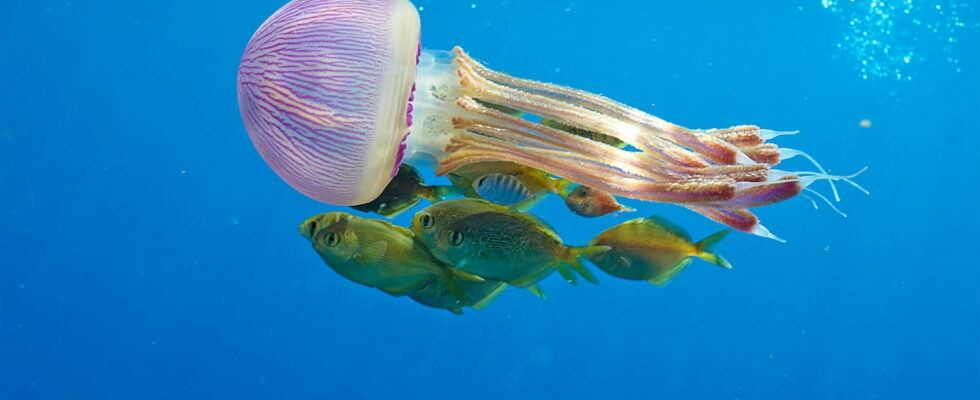An interactive map created by the ACRI-ST laboratory allows you to find out if jellyfish have been seen recently or today on the beach you plan to visit.
This is one of the marine creatures that could benefit the most from global warming. The jellyfish, the scourge of beachgoers, is also spending its summer holidays at your holiday destination. Good news, however, is that a interactive map created by the ACRI-ST laboratory now allows you to know if jellyfish have recently been observed on the beach located near your vacation spot, or those surrounding it.
Looking back over the past three months, it is possible to get a small idea of the most dangerous areas of the French coastline. Indeed, while jellyfish have been observed almost everywhere on the French coasts, whether on the Mediterranean coast or the Atlantic coast, two areas are more coveted by these marine creatures: the Mediterranean coast, between Martigues, to the west, and Menton, to the east, and the Corsican beaches. For the first area, more than 700 jellyfish sightings have been reported this past quarter. It is around a hundred for the Isle of Beauty over the same period of time. Note that in the last 24 hours, around fifteen jellyfish sightings have been recorded on the map for the first area, and two for Corsica.
On the interactive map, it is possible to filter to obtain only the presences observed on the same day, but also those of the day before and this up to obtaining a history of the presence of jellyfish over the last 90 days. The map also allows to know the species of jellyfish observed, if it lives in schools or is rather solitary, and especially if it is urticante and/or dangerous for humans.
